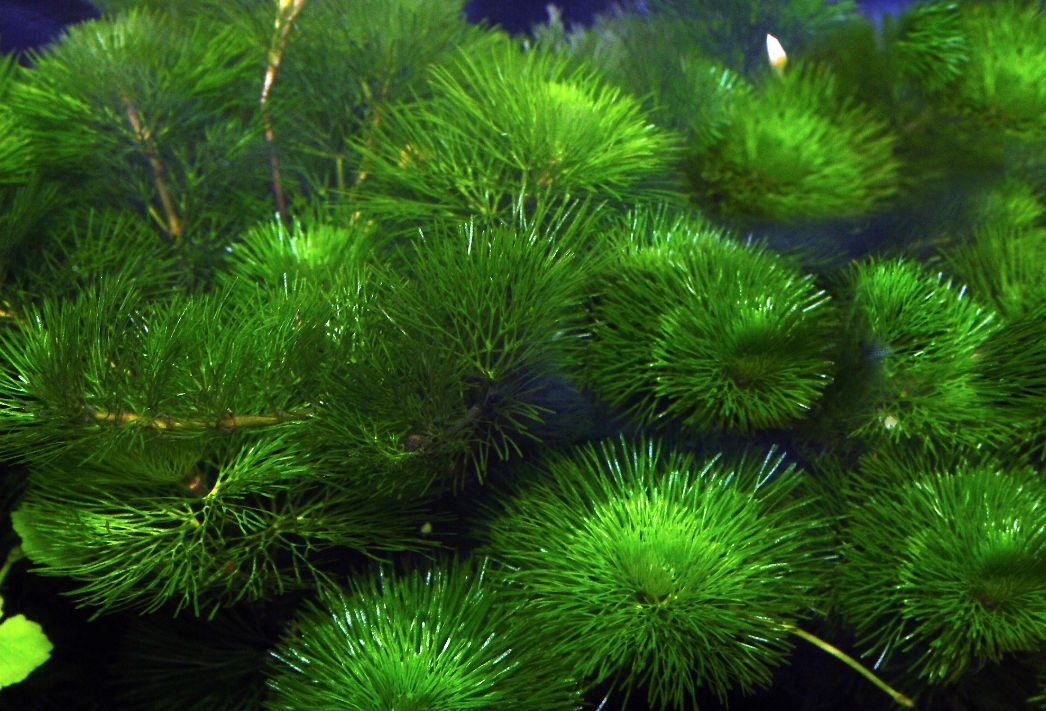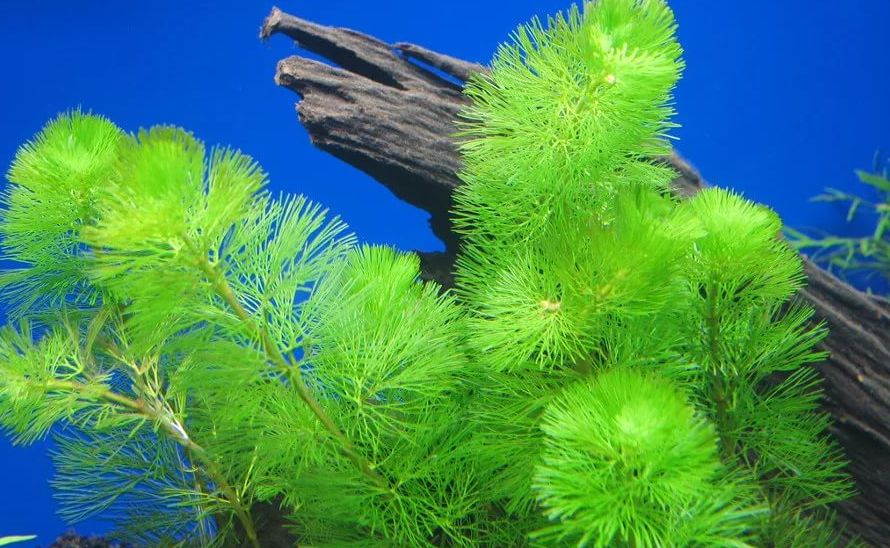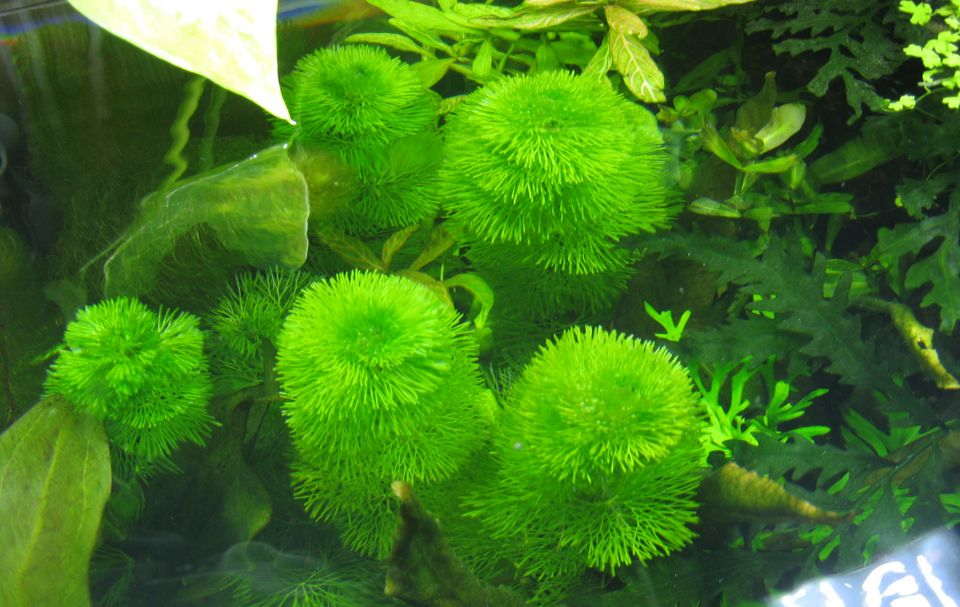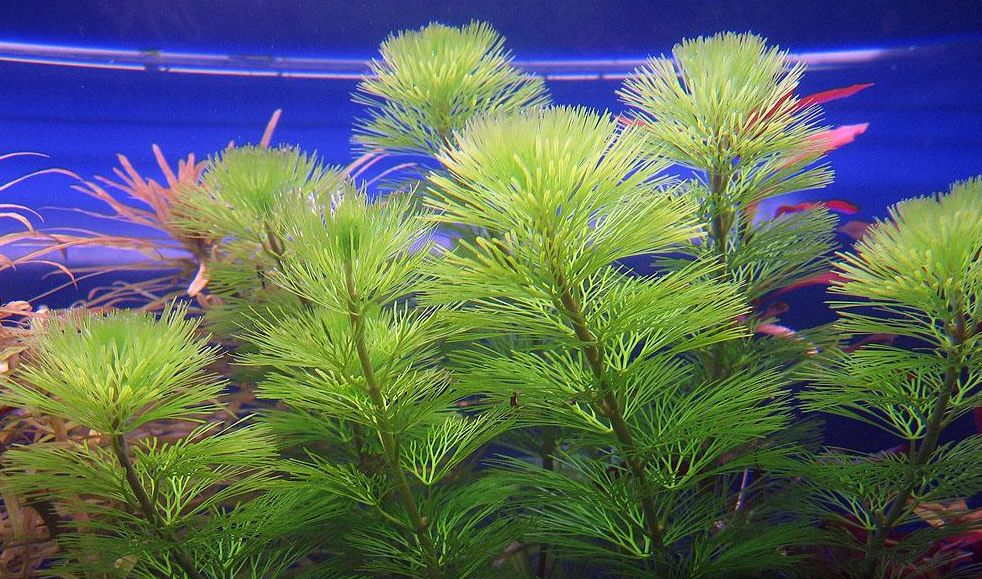Cabomba caroliniana, commonly known as Carolina fanwort or green cabomba, is an aquatic plant species native to the southeastern United States. It belongs to the family Cabombaceae and is often used as an aquarium plant due to its attractive appearance. Cabomba is one of the most renowned and widespread long-stalked aquarium plants. There are five species known for now, plus newly appeared hybrids. Luckily, growing conditions for all these species are almost identical. They differ only in their appearance and growth rate.

Contents
Habitat in the wild and invasiveness
Initially green cabomba natural habitat was rather wide and covered the area from North Brazil and Guyana to South states of the USA (Florida, Texas) and North-West Virginia. Cabomba grows both in lentic and lotic waters; at depth from 30 cm down to 1.5 m. In the wild, Cabomba caroliniana is found in freshwater habitats such as ponds, lakes, and slow-moving streams. It prefers calm or still waters with a moderate nutrient level. It can also tolerate slightly brackish conditions.
The plant was brought to Europe in 1906 and since then it has been here to stay in amateurs tanks.
However, the notion of ‘natural habitat’ for cabomba is quite a conventional one. The plant can propagate using not only water flow as means of transport, but various animals as well. At that a small fragment of its stem or leave can be enough to create a new colony of plants.
In North America plant successfully continues invading more and more new water areas. It has already assimilated in waters of many central and Northern states of the USA and now it is close to Southern states of Canada.
Its expanding one meter long stems block water channels, stream beds of rivers and streams, prohibit boats and motor boats from sailing, impede fishing and suppress local flora. Neither using herbicides, nor other chemical ways of fighting against this plant can’t solve the problem. That’s why in Canada it is prohibited to sell cabomba even to aquarists.
All fanwort needs is abundance of light and nutrition: open water with silty bottom is a perfect biotope for it. As for the rest, including physical and chemical water parameters, these have almost no importance for the plant.

Description
Cabomba is interesting as an ornamental aquarium plant due to its exclusive appearance and simple cultivation process. Its stem is smooth, fleshy and branchy about 1.5 m long; the leaves are fan-shaped and resemble a bottle brush. Carolina fanwort has delicate, feathery leaves that are bright green in color. The leaves are divided into fine, thread-like segments, giving the plant a feathery appearance. It has a slender stem that can grow up to several feet in length.
They are dark green from top and light green from below, grow in front of each other; they are about 5 cm wide. Due to this shape of its leaves vegetation looks very fragile, delicate and gorgeous.
Stems and leaves get their maximum size close to the water surface, where they expand and shadow the area under them. Under water stem grows vertically and then it starts trailing along the water surface parallel to the water flow.
In the wild when the plant reaches water surface, cabomba forms real small floating leaves with a solid lamina and it has white flowers that look like miniature flowers of wild cherry.
| Aspect | Description |
|---|---|
| Common Name | Carolina fanwort, Green cabomba |
| Family | Cabombaceae |
| Scientific Name | Cabomba caroliniana |
| Native Range | Southeastern United States |
| Plant Type | Aquatic |
| Leaf Description | Delicate, feathery, bright green leaves |
| Stem Description | Slender, can grow several feet in length |
| Aquarium Use | Popular aquarium plant for its aesthetic appeal |
| Growth Rate | Fast-growing |
| Lighting Requirements | Bright lighting required for optimal growth |
| Nutrient Requirements | Requires nutrient-rich water and regular fertilization |
| CO2 Requirements | Benefits from a consistent supply of carbon dioxide (CO2) |
| Water Temperature Range | 72-82°F (22-28°C) |
| pH Range | 6.0-7.5 |
| Propagation Method | Stem cuttings, replanting in substrate or allowing it to float |
| Invasive Potential | Can become invasive in some regions, careful management required |
| Ecological Impact | May outcompete native aquatic plants and disrupt ecosystems |

Difficulties in keeping
For aquarists green cabomba is still a beautiful decoration of the tank: they value the plant for its perfect appearance and unpretentiousness, amazing figurability and high growth rate. The cabomba easily adapts to various tank conditions, grows fast, actively participates in cycle of matter in the tank. Thickly growing bushes are perfect shelter for juveniles and are used as a spawning substrate for many fishes.
You can grow the green cabomba in a tank of any size. It’s better to put it in the background where it forms gorgeous ornamental curtain. Cabomba caroliniana grows uniformly all the year round.
Care and keeping in a tank
Water parameters
Carolina fanwort prefers water temperatures between 72 to 82°F (22 to 28°C) and a pH range of 6.0 to 7.5 However, due to almost 100 years of its cultivation in tanks the plant has adapted well to harder water. Although, in this case it grows slower and its leaves are smaller.
The plant is comparatively not demanding to its growing conditions. It perfectly grows both in moderately warm tank with water temperature about 18 — 22 °C and in tropical tank with water temperature higher than 24 °C.
Lighting
In comparison with other representatives of the family, green cabomba is less demanding in terms of illumination. But it doesn’t mean at all, that the plant can develop properly in shadow. You can get strong, good looking plants just by providing them with proper lighting intensity (from average to high level).
Provide moderate to high light intensity for Cabomba caroliniana. Insufficient light may result in slower growth, leggy stems, and pale leaves. Aim for around 2-3 watts per gallon of fluorescent lighting or 3-5 watts per gallon of LED lighting. LED lighting is often recommended for aquariums due to its energy efficiency, long lifespan, and adjustable intensity. It allows you to customize the light spectrum and intensity based on your plants’ needs.
Provide a photoperiod of 8-10 hours of light per day. This duration helps simulate a natural day-night cycle and supports the plant’s metabolic processes.
Some lack of illumination hardly ever will cause the plant death, but it is quite capable of ruining its appearance, not to mention consequences of growing in thick shadow. When the plant is lack of light, it starts to elongate, the growth rate slows down and the coloring gets pale with yellowish tint.
Gradually the size of its lamina gets smaller and internodes become larger. Absence of leaves on a stem base doesn’t make the plant look better as well. At that we should mention that unlike the fast process of the plant growing, the process of recovery goes much slower.
Both natural and artificial light is good for illumination of a tank with green cabomba in it.
Substrate
Fragile root system develops better in a substrate of large grained river sand or small sized pebbles (2-4 mm large). In the substrate with larger grains it is more challenging for creeping roots of the old plant to develop. Fine-grained substrates, such as sand or small-sized gravel, allow the plant’s delicate roots to anchor properly without impeding their growth or causing damage.
Aim for a substrate depth of around 2-3 inches (5-7.5 cm) to provide ample space for root development. This depth allows the roots to spread out and anchor securely while still accessing nutrients from the substrate.
Fertilizers
Lack of nutrition and light make cabomba look less appealing, so it’s better get liquid fertilizers in advance and remember to introduce them timely and according to manufacture’s recommendation.
Cabomba caroliniana requires a balanced supply of macronutrients, including nitrogen (N), phosphorus (P), and potassium (K). Look for liquid or powdered fertilizers specifically formulated for aquarium plants that provide these essential macronutrients.
In addition to macronutrients, Cabomba caroliniana also benefits from essential micronutrients such as iron (Fe), manganese (Mn), zinc (Zn), and others. These micronutrients are crucial for the plant’s overall growth and coloration. Consider using a comprehensive aquarium plant fertilizer that includes a wide range of micronutrients.
CO2
Cabomba caroliniana is a demanding plant and can benefit from a consistent supply of carbon dioxide (CO2) in addition to fertilizers. If you are injecting CO2 into your aquarium, it’s important to maintain a proper balance between CO2 levels, lighting intensity, and nutrient supply. This helps prevent nutrient deficiencies or imbalances that could hinder the plant’s growth.

Compatibility
Thickly growing cabomba is a perfect shelter as well as a rich feed for many fish species juveniles. Lacelike thicket only at first sight seems to be easy to get into, while predators usually don’t go there. However, fish juveniles and youth like this place – there they have space to swim and there are many microorganisms they can eat.
For climbing perch species fragments of the leaves are perfect construction material to strengthen their foam nest. For characins and small carps this is an ideal medium for spawning.
Propagation
In a tank green cabomba is easily cultivated by means of cutting its stem or rootstock. Solid stems separated from the rootstock or with a part of it start to grow very fast at a new place. By dividing the stems into parts with 5-6 verticils you can also obtain a new plant when planting them and burying their 2-3 verticils into the substrate. However, this propagation process goes a bit slower.
Fluffy, strong and good looking tops of the plant strike roots better and faster start to grow. Parts of the stem that are close to its roots aren’t suitable for seeding and it’s better not to use them at all: they usually have thin, not leafy and not very nice runners.
Sprigs taken from the middle part of the stem stop growing until the new root system forms. Cabomba doesn’t like frequent replanting. To make its stem branchy it is enough to trim its top, which then can be used as a planting material.
Roots of species, especially of old and climbing ones, can be quite long and branchy, but at that they are fragile and breakable. It is very challenging to take the plant from the substrate without damaging its roots.
If it is really necessary to replant cabomba, it is better just to cut off with a sharp knife lower part of the stem and then use it as a sprig. In general, you can even leave the floating in a tank without planting it into the substrate, still it will grow even like this.
Sources
- https://en.wikipedia.org/wiki/Cabomba_caroliniana
- https://www.invasiveplantatlas.org/subject.html?sub=5223
- https://onlinelibrary.wiley.com/doi/abs/10.1111/wre.12518
- https://plants.ifas.ufl.edu/plant-directory/cabomba-caroliniana/
- https://www3.uwsp.edu/cnr-ap/UWEXLakes/Documents/programs/CLMN/AISfactsheets/05Carolina%20Fanwort%20Handout.pdf
- https://www3.uwsp.edu/cnr-ap/UWEXLakes/Documents/programs/CLMN/AISfactsheets/05Carolina%20Fanwort%20Handout.pdf